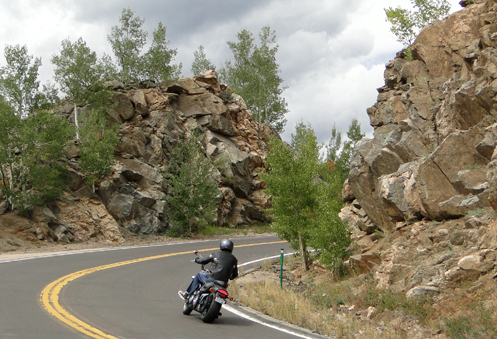Motorcycling Fact or Fiction?

I just want to pass along this information I saw in this month’s issue of ABATE of Colorado‘s Spokesman publication. It’s something they got from the Motorcycle Riders Foundation, and has to do with the statistics that so often are used to justify “fixes” for problems. Here’s what the MRF put out.
Possible Errors? When errors, omissions or inaccuracies are discovered in reports or statistics, it calls into question the integrity of results. Additionally, small numbers can be easily skewed by slight or seemingly insignificant variations. Furthermore, numbers may be exploited if uncharacteristic highs or lows are used as a baseline. None of these discoveries are intended to argue against helmet use, but rather to demonstrate that suggesting a helmet law is not the solution to motorcycle safety. Individual states need to maintain the ability to determine what measures best address the needs and desires of their residents as suggested in the National Agenda for Motorcycle Safety (NAMS).
FACT Comparison of studies is complicated due to varying criteria, wherein one report references riders, it is unclear if that includes passengers or specifically operators. Other papers may refer to the numbers of persons, crashes or vehicles intermittently. This can be quite confusing as the numbers are usually very close and are frequently compared in error.
FACT A Minnesota motorcyclist survived a crash only to be struck by a car while standing on the road attempting to flag down a motorist for assistance. This was subsequently counted as a motorcycle fatality.
FACT A Pennsylvania taxi driver, with multiple suspensions,was responsible for about two percent of the state’s total motorcycle fatalities when he caused a crash with three motorcycles and killed five helmeted riders in a single incident.
FACT Motorcycle fatalities dropped by 10% in 2009 and preliminary reports indicate that 2010 numbers will be further reduced by at least 2%. The Motorcycle Industry Council advises that sales of replacement tires were up by 6.1% in 2010, suggesting an increase in motorcycle usage. A decrease in fatalities despite an increase in exposure would suggest that motorcycle safety and awareness programs, specifically rider education courses, have been successful.
FACT The National Transportation Safety Board has investigated over 120,000 airplane incidents, over 60,000 surface transportation incidents, and just 6 individual motorcycle incidents in their entire 44 year history  Apparently enough investigation to warrant adding mandatory helmet laws for motorcyclists on their “top ten most wanted list.â€Â
FACT According to preliminary data from the Governors Highway Safety Association, states that have a mandatory adult helmet law had 6 fewer fatalities in 2010 than in 2009, while free choice states saw a reduction of 74. The state with the single largest decline in fatalities (Texas -60) is a choice state and a state which requires helmets on all riders tied for the greatest increase (New York +24).
FACT FARS (Fatality Analysis Reporting System) continues to include “mopeds†in motorcycle crash statistics despite the fact that most states do not require registration of these vehicles. This practice skews the most respected method of measuring the effectiveness of motorcycle safety programs, which is the ratio of accidents, injuries and fatalities per 10,000 registrations.
For more information, contact Jeff Hennie, Motorcycle Riders Foundation, 202-546-0983, jeff@mrf.org
Recent from National Motorcycle Examiner
Creating a comfortable, high-mileage motorcycle that carries groceries
Biker Quote for Today
She pulled out into his path. Classical modus deathus for a biker.
Tags: motorcycle statistics
